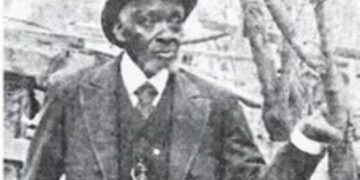Like Tom Wolfe, Patricia Cornwell has also gained huge popular success. Cornwell is not a native of Virginian, but her success as a popular novelist came as the result her job in Richmond in the Office of the Chief Medical Examiner of Virginia. 25 of her novels feature Kay Scarpetta, a medical examiner who becomes a major crime solver.
Cornwell was born in Miami, Florida in 1956 but grew up in Montreat, North Carolina.
Her father, Sam Daniels, a highly successful lawyer, was, according to Cornwell, an abusive husband and father who deserted his family the day after Christmas in 1961. Her mother moved her three children to Montreat, where she met Ruth Bell Graham, the wife of the famous evangelist. Mrs. Graham arranged for the children to be raised by another Montreat couple, as Mrs. Daniels, suffering from severe depression, was unable to raise her children.
Mrs. Graham recognized and encouraged Cornwell’s talents, both in writing and athleticism. Cornwell earned a tennis scholarship from Davidson College where she majored in English, graduated in 1979 and in 1980 married one of her professors, Charles L. Cornwell who was 17 years older than she. They separated and divorced in 1989, but she kept her married name. Ultimately, Cornwell came out at as a lesbian; she has said that Billie Jean King’s example helped her accept her own sexuality. In 2006, Cornwell married Staci Ann Gruber, a professor of psychiatry at Harvard University. They live in Boston. .
Cornwell’s first published journalistic articles; after her graduation from Davidson in 1979, she worked as a reporter for The Charlotte Observer, ultimately covering crime in the city. In 1980, she won the North Carolina Press Association’s Investigative Reporting Award for a series on prostitution. She left journalism in 1981 when she moved. with her husband, to Richmond, Virginia. There she wrote a biography of Ruth Graham, A Time for Remembering: The Ruth Bell Graham Story, published in 1983. It won a Gold Medallion Book Award from the Evangelic Christian Publishers Association in 1985; however, Mrs. Graham did not approve of the work: Cornwell and she were not on speaking terms for eight years.
In 1985, Cornwell began to work at the Office of the Chief Medical Examiner of Virginia, first as a technical writer and later as a computer analyst. A year earlier she began to write her first detective novel; she had also met Dr. Marcella Farinelli Fierro, a medical examiner in Richmond who inspired Cornwell’s most famous character, Dr. Kay Scarpetta. Cornwell has said that by 1990, she had written three novels–all rejected.
Postmortem, featuring Dr. Kay Scarpetta, came out in 1990. She based the novel on a number of real-life murders that occurred in Richmond during the summer of 1987. The novel won several awards, including the French Prix du Roman d’Adventure and the American Edgar Award. An article on the Davidson College website reveals that, between 1990 and 2021, Cornwell published twenty-four more Scarpetta novels as well as several other books. Her novels have sold more than 100 million copies in 36 languages in more than 120 countries. 29 of them were New York Times bestsellers. Five of her books became movies.
Forensic science plays a major role in the Scarpetta novels, and, according to the article on the Davidson College website, Cornwell has “often been credited with bringing forensic science into mainstream crime fiction, paving the way for forensic science to fill the entertainment world.” The popular CNN series “Forensic Files” comes immediately to mind. Of her influence, Cornwell has said, “I didn’t invent forensic science and medicine. I was just one of the first people to recognize how interesting it is and make it accessible.”
Most of her Scapetta novels are set in Virginia. In Point of Order (1998), Kay Scarpetta is called to a farmhouse in the Virginia countryside. When she searches the ashes, she finds a murdered body. Just as she finds the body, Scarpetta also learns that a female murderer, who earlier has almost ruined her life, has escaped from a psychiatric hospital and has vowed revenge on Scarpetta. Cornwell’s detective then must simultaneously solve the murder of the victim she has found and save herself.
During the early 2000s, Cornwell became fascinated with Jack the Ripper, the notorious murderer of prostitutes in late 19th-century London. Believing that the British painter Walter Sickert is Jack the Ripper, Cornwell published Portrait of a Killer: Jack the Ripper–Case Closed in 2002. In trying to prove her case against Sickert, Cornwell bought over thirty of his paintings, maintaining that he based them on the Ripper’s crime scenes. Her book caused considerable controversy, particularly in Britain, and her theory has mainly been dismissed.
Enormously wealthy as a result of the huge sale of her work, Cornwell has funded a number of charities including the Virginia Institute for Forensic Science and Medicine. She has also established scholarships at the University of Tennessee and at her alma mater Davidson College where she endowed a yearly Creative Writing Scholarship for two first year students; among other donations, she also gave her collection of Walter Sickert paintings to Harvard University.
If you like detective fiction with a medical twist, you’ll find Cornwell’s work fascinating.





























